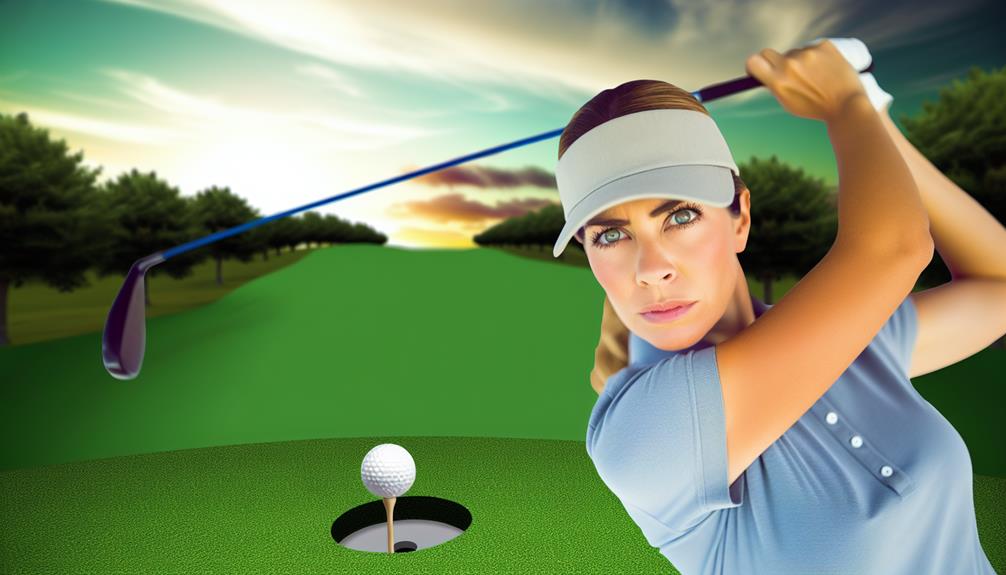Did you know that 40% of golf shots are putts? That's right, almost half of your game's outcome hinges on your ability to master the greens.
While you've probably spent countless hours perfecting your swing and improving your long game, you might be neglecting the crucial skill of putting. Perfecting your putting skills can shave strokes off your game and elevate your performance to a whole new level, but it's not as simple as it seems.
The technique, understanding of the green, and the right grip all contribute to successful putting. Stay with me, as we're about to explore some effective strategies to transform your putting skills and potentially revolutionize your game.
Understanding the Basics of Putting
Your golfer's intuition will serve you well as we delve into the basics of putting, a critical skill that can make or break your game on the golf greens. Don't underestimate the power of putting psychology. Maintaining a steady mind is as important as having a steady hand. You've got to visualize the ball's path, reading the green's slopes and curves with a discerning eye. Confidence is key. Don't second guess yourself, make your decision and stick with it.
Now, let's talk about equipment selection. Your putter is your closest ally on the green, so choose wisely. The weight and length should feel comfortable and enhance your natural stroke. Remember, a heavier putter can help you maintain a steady hand, while a longer one can give you better control. The grip is also crucial. It should fit comfortably in your hand, providing enough friction for a secure hold without causing tension in your wrists or forearms.
Lastly, practice is essential. Put in the time on the practice green, honing your stroke and testing various putters. In time, you'll find the right combination of psychology, equipment, and technique to elevate your game.
Analyzing Golf Green Conditions
Having mastered the fundamentals of putting and equipment selection, it's time to scrutinize another vital aspect of your game: analyzing the conditions of the golf green. This involves two key elements: green reading techniques and speed control strategies.
Green reading is your ability to decipher the contour and grain of the green. Look closely at the grass, its color, and how it's laying. Darker greens usually mean the grain is growing towards you, making the putt slower. Conversely, lighter greens signify the grain is growing away from you, resulting in a faster putt. Also, observe the green's slope. Your ball will generally break or curve towards the lowest point.
Speed control, on the other hand, is about judging the power needed to reach the hole. It's crucial to consider the green's speed, which can be influenced by factors like weather and maintenance. Practice swings before your putt can help you gauge the right force needed.
Perfecting Your Putting Grip
To elevate your golf game, it's essential to perfect your putting grip, as it greatly impacts the direction and speed of your ball. A firm grip strength, coupled with a refined wrist alignment, can significantly improve your putting precision.
Let's start with grip strength. It's key to maintain a consistent grip pressure throughout your stroke. Too tight and you'll risk reducing your feel for the putt; too loose and you'll lose control. Practice holding the club in a way that's firm, yet relaxed, allowing for a smooth and controlled stroke.
Next, let's discuss wrist alignment. Your wrists must stay steady during your putting stroke. Any unwanted wrist movement can send your ball off course. Align your wrists so they form a straight line with your forearms, creating a unified structure which helps to ensure a square clubface at impact.
Lastly, remember this: the perfect grip is the one that feels comfortable and provides you with the most control. So, experiment with different grips until you find the one that works best for you. With practice and patience, you'll be sinking more putts in no time.
Advanced Putting Techniques
Once you've nailed your grip, mastering a few advanced putting techniques can skyrocket your golf game to new heights. The first technique you should focus on is psychological preparation. Golf is a mental game just as much as it's physical, and the ability to stay calm under pressure can make all the difference on the green. Practice visualization techniques, imagine the ball's path, and maintain a positive mindset. Remember, confidence can turn those near-misses into hole-in-ones.
Next, let's discuss innovative putter designs. You're not stuck with just one type of putter, and utilizing different designs can drastically improve your performance. For example, blade putters are great for striking the ball squarely, while mallet putters provide more forgiveness for off-center hits. There are also more technologically advanced putters that feature alignment aids and adjustable weights. These can help you control your stroke better and achieve consistent results.
Don't be afraid to experiment with different techniques and putter styles. It's about finding what works best for you. With patience and practice, you'll be sinking putts like a pro in no time.
Regular Practice and Consistency
While mastering advanced techniques and choosing the right putter are key, it's regular practice and maintaining consistency that'll truly perfect your putting skills. Golf isn't only about physical prowess; it's a mental game, too. So, alongside physical practice, mental preparation is equally important.
Start by setting up a regular practice schedule. This consistency will help your body memorize the right techniques and movements. You can't expect to improve your game if you're only hitting the greens sporadically.
Next, focus on stance adjustments. Your stance is a critical part of your putting technique. Remember, a slight change in your stance can dramatically affect your shot's direction and distance. Experiment with different stances during your practice sessions until you find the one that yields the best results consistently.

